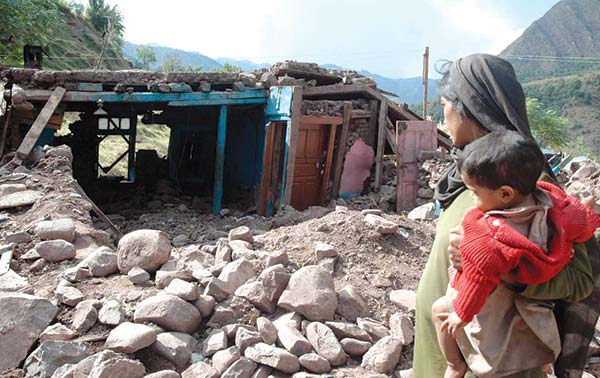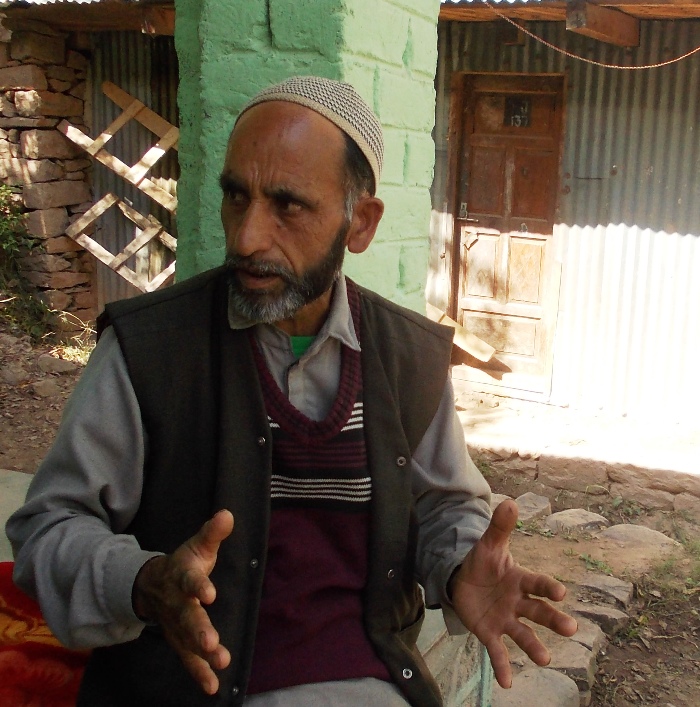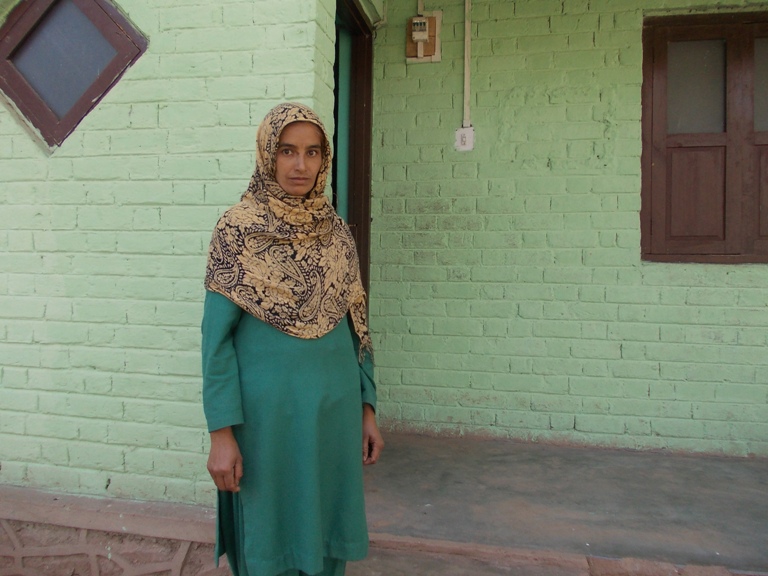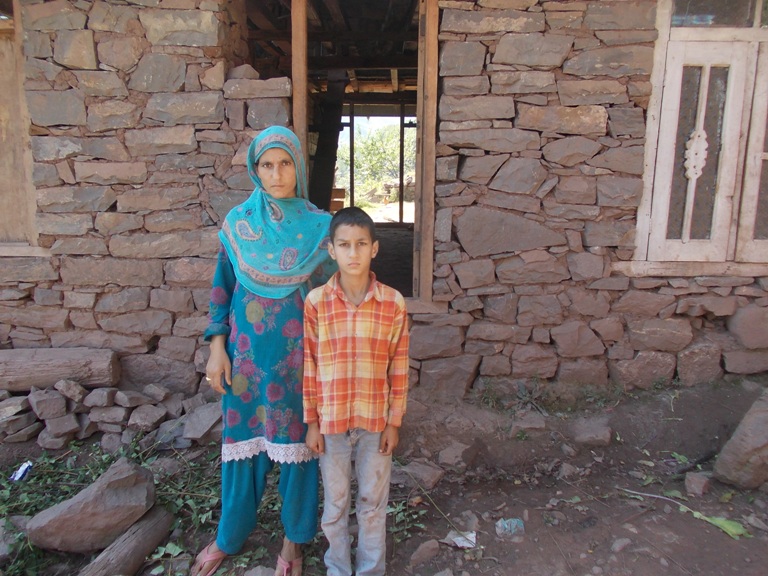Ten years after tremors struck valley devouring 1,400 people in a matter of few minutes, the worst hit Uri in North Kashmir has been trying hard to get back on its toes. To gauge the mood, Bilal Handoo visits the border town to report the decadal change peddling between nostalgia and rebuilding

It was supposed to be a routine day for 62 labourers from Uri on Oct 8, 2005. All of them working for construction company Beacon were travelling in a tipper. Around 9:20 am at Uri’s Kaman Bridge, the deadly tremors rattled hills around them. The tremors of 7.6 magnitude didn’t stop with shakes only. Soon hills broke loose. Boulders, trees logs and mud came down. Four among them jumped out of tipper before hill debris buried the rest. One among the four got trapped only to recall his resurrection from the grave later on.
Today as Lal Din unfolds his burial tale, he suddenly turns dismal. He recalls rather in a poor-sounded voice how he spent those 24 hours beneath mud. Mud was all over him as if nature had interred him alive in his grave. He couldn’t move his legs, arms or any body part. “But miraculously,” says the handsome man in his late thirties, sitting on his fresh fruit cart in Uri’s main bazaar, “I was breathing.” While he was raising storm with his cries under the thick cover of mud, the whole Uri was flattening under the weight of tremors. The tremors that came wobbling from other side of Kashmir doomed this mountainous region in a jiffy. Those who survived the shakes were running to know the whereabouts of their dear ones. It was the same search which ultimately saved the life of Lal Din.
But before the help could reach him, Uri’s Pandian village too fell like a pack of cards. Some 90 traditional houses couldn’t survive the shock. Among the witnesses was a villager Mohammad Sadiq Awan. The elder saw Pandian collapsing under the earthly shudder, dangerously repeating after certain intervals. The devastating scenes before his eyes petrified Awan. And then came his lamenting wife running from nearby jungle, inconsolably asking him, “My son… Iqbal… Please do something. Bring him back home…” But Awan sensed bleak chances of survival of his son, Iqbal Awan, one among the 12 village boys travelling in that buried Beacon vehicle near Kaman Bridge. “I knew there was no hope,” says the greyed father. “My son was far away from us in most troubled and most devastated zone.” At the same far end, tremors had also tormented a young mother of Pandian.
As the village started shaking, Naseema Begum became the shield of her two kids, hugging them tight. She didn’t want to lose her small world to the devastation. But it didn’t take her much time to realise that the tremors were also unforgiving for her. In that buried Beacon tipper, her husband, Mushtaq Ahmad was also silenced forever. The silence fell over the life of aged mother, Janat Bi as well. Her son, Khalid Hussain, was also in that buried vehicle.
But before the deadly news arrived and preparation for mass burial in Pandian began, the villagers had gone to Kaman Bridge on their own risk. Uri was still shaking in momentary aftershocks. They walked past collapsed houses, torn roads and debris mounds. Near Kaman Bridge, they saw road slid down to Jhelum. Except a disturbing silence and dreadful desolation, nothing else was visible.
It was then they heard some broken voice, pleading for help. They rushed forward in flock, began digging out. A few minutes later, a shaking arm came out of the mud. They brisk with their rescue operation and soon took out the only surviving man out: Lal Din.
Later, villagers stepped back into their crestfallen village by carrying stretchers on their shoulders. On those stretchers, their dear ones turned dead ones made the air mournful in Pandian. Not everyone was lucky to even get their dead ones back, like a mother, Janat Bi. “In him,” she says, “I lost something very precious.” It seems even time is no healer for the devastated mother like her.

Uri continue to house many such depressing souls. Some 14km from Uri, Gowalan lost 35 souls in the natural assault. In a matter of a few minutes, 150 stone houses were down to the ground. The vegetative cover of the village suddenly disappeared. In the neighbouring Sultan Daki, the ‘tremor terror’ was the worst. Those tremors travelling from “Azad Kashmir” hit and exploded a mountain in this village. “Everything was falling flat on ground that day,” says Aftab Ahmad, a villager. “We couldn’t even set foot on ground, crazily shaking beneath our feet.” By the time dust settled, the surviving villagers saw the entire 250 houses turned into a mound of mud and shortly, 56 fresh graves dotted the mutilated landscape of Sultan Daki.
But the mayhem was even vicious and violent at Kamalkote, a neighbouring village, housing 2800 souls in 1300 structures before October 8, 2005. Once tremors came terrorising the village, an elder Kabir Hussain saw smoke, dust and panic everywhere. As the mountains calmed down, Hussain and other villagers realised they had to unbury the dead only to bury them again. “This village lost 267 persons, while 384 others were badly wounded,” says Hussain, a weathered man sitting on a porch of his new home. The biggest aftershock for villagers was to get ready to bury their dear ones, he says. “And this literally broke our spine,” he pauses before stating, “It was a great natural injustice with us!”

Once such lamenting voices got shriller, the then Secretary-General of United Nations, Kofi Annan cautioned the world, “massive wave of death will happen if we do not step up our efforts now!” And soon massive aid turned up for rescue and relief. The roadmap was clear: after destruction, it was time for construction.
Somehow Uri was reluctant for rebuilding phase on face of deep sense of loss. But the border town had to move on. It finally did after volunteers, officials and philanthropists showed up with help. In Pandian village, traditional stone structures (blamed for widespread casualties in 2005 quake) were abandoned. Instead NGOs constructed concrete structures in this sleepy village to reduce fatal consequences of tremors in future. “Government only provided road stretch to Pandian,” says Awan, a village elder. “Except that, it did nothing. Some of us are still making rounds to government offices to clear our compensation.” The things aren’t any better in Nambla, nestled in picturesque backdrop, strewn with concrete structures and sheds.
In the name of development supported by aid, the village has got electricity and portable water supply. These signs, say locals, merely make for the visible development in Nambla. Behind the development hitch, there was a ‘politicisation’ of aid. And for this, the villagers blame civil administration and army. After quake, some men looking for their booty began trading with humanitarian aid dispatched to Uri on war-footing, they say. “These men bought the aid material like roof tins from army at throwaway prices and then sold it to the locals at less than a market price.” This clicked their sales, they say, and thus, they made fortunes out of the humanitarian crisis.
Amid this aid crisis, Uri’s concern triggered by tormenting tremors was escalating. Once the wave of new construction boom gripped the town, the old and traditional architecture got redefined. The change went on to disintegrate the joint family set up of Uri. Earlier, says Attauallah, a retired official, introducing himself as Uri’s first M Ed, those stone houses would keep the families together. “But after the advent of new construction wave, people look for new spaces. This unintentionally disintegrated Uri’s joint family system.” The change that swept Uri was more regressive than progressive in nature, believes the retired official, running a stationery shop in Uri’s main bazaar. “Don’t mistake Uri with town’s decorated look. It is just a face and, also a farce!” The grassroots are still living in miserable conditions since 2005, he says.
The town mostly thriving on its seasonal walnut produce seems also ruing the fact how the power giant, NHPC, running two power projects in the town also failed it. “Under corporate social responsibility, the corporation is mandated to help in rebuilding Uri where it makes profit like anything,” says a disgruntled Attauallah. “But sadly, it did nothing beyond milking its own cow.”

In absence of a constructive help, Uri has changed quite radically. And the immediate hit of this neglect appears its trees and crops. In Kamalkote and Sultan Daki villages, maize and walnut productions have dipped in last decade, locals say. “It happened because the quake altered the course of land,” says Farida Begum, a local in Sultan Daki. The fragile mountains have equally troubled the villagers by becoming prone to slides. “We often lose our portion of farmland or houses to landslide whenever it rains,” she says. “It all started after quake hit us.” What also started on October 8, 2005 was the fascinating birth of a boy in Jabla village of Uri.
That morning, ten years ago, a young mother Amina gave birth to her baby son inside the stone house. Later as her shelter rattled, everyone ran for cover. Fresh from child birth, Amina couldn’t run and got buried under house. Outside the debris of her home, her injured husband, Manzoor Mir was madly trying to unearth his wife and son. He shortly got hold of her hair and heard her shout, “easy, I am alright.”
And with that, she handed over their son to him, who appeared dead to him. He passed the infant to his grandfather, and began unearthing his wife. As the family started preparing for infant’s burial, some drops of water her mother was drinking got sprinkled on his face and he shook much to the delight of his parents. He was alive! Later, they named the infant as Abid Zalzala (earthquake).

Ten years later, a 10-year-old Abid is leading a life of penury. The only survivor of Beacon tragedy is battling with health issues. Mohammad Sadiq Awan, the father who lost his son to shakes is still making exhaustive courtroom visits to clear his compensation. The erstwhile prosperous grocer from Sultan Deki, Aftab, is now running a grocery shop from a tin shed in Uri market. And, Farida Begum is constantly losing her farmland to landslides. And this is Uri – a decade after the tremors.















